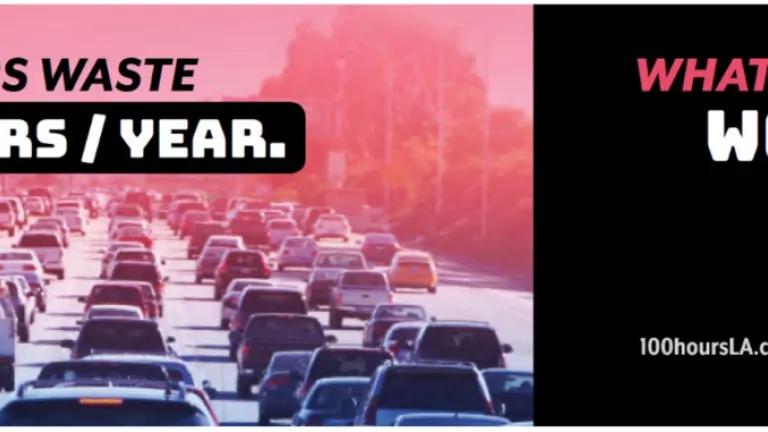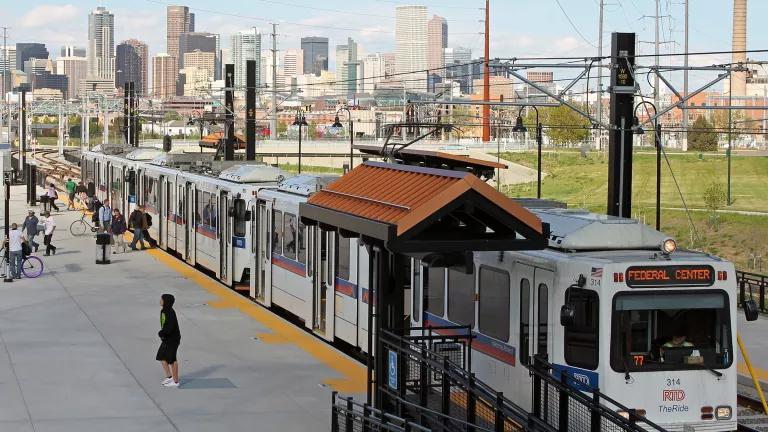How LA Could Cut Traffic and Give Commuters 100 Hours a Year

If you asked Los Angeles commuters what they would do with an extra 100 hours each per year, they’d probably say spend more time with family, take a vacation, work a little extra to save up for a big purchase, or study for midterms.
Transportation experts and city officials don’t have the power to change how fast the Earth orbits the sun, but they do have tools to help city residents get back time they spend stuck in congestion.
Enter the Southern California Association of Governments, aka SCAG—the six-county regional transportation and development planning coordinator for the L.A. area.
SCAG launched a study to explore how we could untangle the region’s worst transportation knots.
Recognizing we can’t simply build our way out of traffic in Los Angeles with more highway lanes, SCAG looked to how we could better manage our road space and offer options that help people get around without getting in their car.
Rather than wider freeways inviting more congestion, we could have “Go Zones.” The idea is to saturate a geographic area with multiple transportation solutions. Tying it all together is a decongestion fee to incentivize just enough drivers to take a more sustainable and efficient transportation option, or avoid driving in the Go Zone at the busiest time of day.
SCAG screened the entire region for areas with the highest congestion where a Go Zone could make the biggest impact. If you’re reading this on the 704 Metro bus crawling east towards the 405, you are already highly aware it’s the Westside of L.A., an area rich in jobs that only recently has been connected into the county rail network.
SCAG analyzed a potential Go Zone on the Westside (roughly north of the 10 freeway, west of the 405, south of Sunset Blvd) featuring more frequent buses, trains and shuttles, shared mobility choices such as bikeshare and dynamically routed ridesharing, as well as improvements to make walking and biking safer. A $4 charge for drivers entering the Go Zone at peak hours would be the nudge needed to reduce congestion and allow all the other transportation choices work.
Consistent with the results from similar existing programs in London, Stockholm and Singapore, SCAG’s study finds that, if implemented, a Go Zone could cut cars entering the area by 19%, while increasing transit ridership by 9%, walking by 7% and biking by 7%. If carpools of three-or-more were exempted from the toll, those carpools would increase by 51%. That adds up to a Sunday morning driving experience, seven days a week.
It’s no surprise that New York, Seattle and Vancouver are also looking at decongestion fees as an important tool in their comprehensive mobility strategies.
In addition to recapturing millions of hours lost to congestion, the Go Zone would yield $1 billion in economic benefits over a 16-year analysis period, at a benefit-to-cost ratio of 3-to-1, and produce almost $70 million in annual dividends to fund enhanced affordable and sustainable transportation options in the Go Zone, like additional express buses from the Eastside, Valley, South L.A. and South Bay.
We know that a Go Zone can also be a tool for improving social equity if done right. Low-income commuters ride transit, walk and bike in greater numbers than Angelenos in general. They could stand to benefit from faster buses and trains, new lines and more frequent service. And communities impacted by vehicle pollution could enjoy cleaner air. But we must also ensure that low income families who rely on cars to access congested areas at rush hour have affordable options to continue accessing those employment, educational and social opportunities.
According to SCAG’s analysis, only 17% of low-income commuters to the Go Zone drive alone, compared to 29% who take transit, 43% who carpool and 10% who walk and bike. However, SCAG recommends considering a 50% reduction in the de-congestion fee (from $4 to $2) to qualified low-income households for driving into the Go Zone.
All told, if implemented, a Go Zone could move L.A.’s transportation system from one of inescapable congestion and frustration, to one of abundant options and accessibility.



